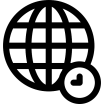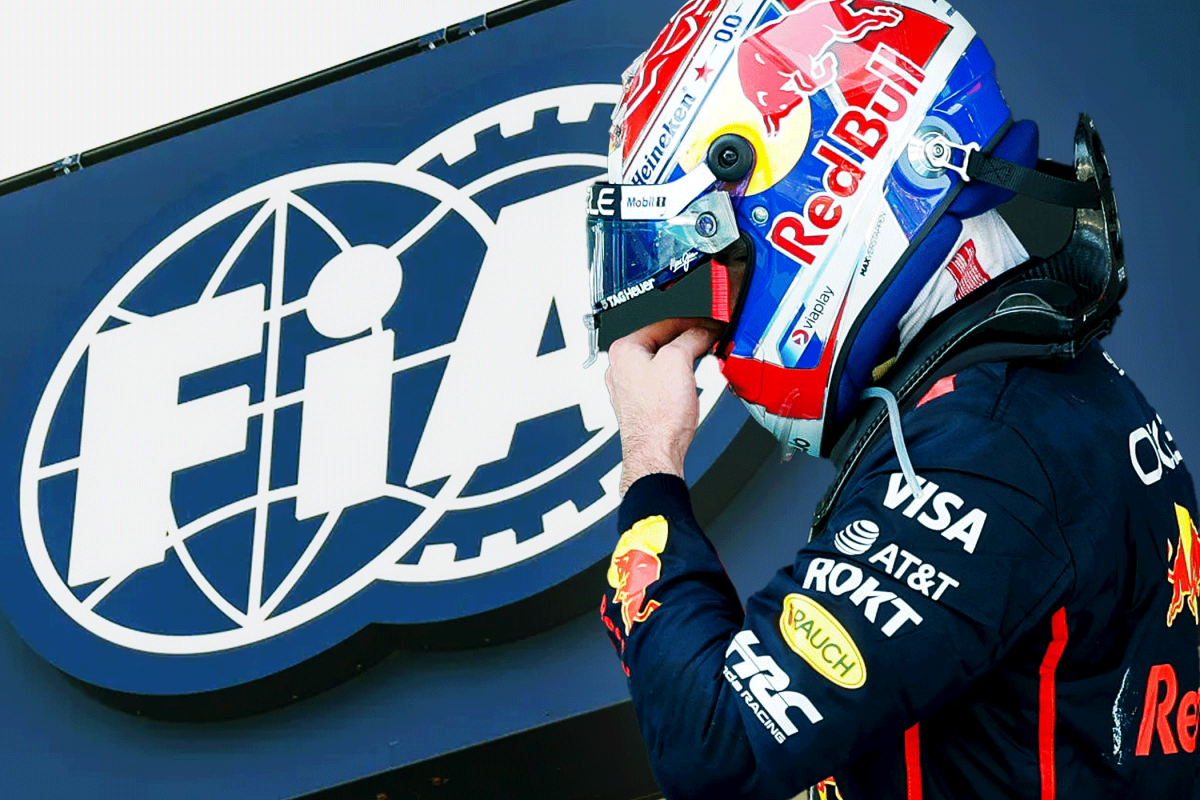Max Verstappen’s potential race ban may feel like an embarrassment for the four-time world champion, but he would actually find himself in illustrious company should he have to miss a Formula 1 race in 2025.
The Dutchman sits on the cusp of a race ban with 11 penalty points on his FIA Super Licence, and an additional point at the Canadian or Austrian Grands Prix will see him miss the subsequent race.
F1 HEADLINES: Marko plans Verstappen exit confrontation as Aston Martin ready to pounce
Red Bull will be keeping their star driver on a short leash for the next two rounds, but will the championship really be out of reach for Verstappen if he is forced to serve a race ban?
Or, can the F1 champions of yesteryear offer him hope, as he could emulate legends such as Michael Schumacher, Nigel Mansell and Mika Hakkinen?
How many F1 drivers have received a race ban?
Eight drivers in total have received an F1 race ban from 1978 until the present day, all for a variety of reasons before the FIA introduced a penalty points system in 2014.
Some drivers were banned for aggressive driving and dangerous overtakes, whilst others missed a race because of team errors completely out of their control.
The names on this GPFans list may come as a surprise, especially given their legendary status in the sport. However, it also proves that within many champions is the desire to win at any cost.
Michael Schumacher (1994)
In 1994 Schumacher was forced to miss two races due to a ban, after he overtook rival Damon Hill on the formation lap of the British Grand Prix.
The move meant Schumacher received a five-second stop-go penalty, but Benetton told their driver to ignore the penalty as they launched an appeal.
Schumacher was later shown the black flag - signalled to disqualify a driver from a race - but returned to the pits to carry out his initial punishment, only to be disqualified from the event and given a two-race ban for ignoring the black flag.
The good news for Verstappen? Schumacher still won the championship in 1994.
Nigel Mansell (1989)
Mansell was another driver to receive the black flag at the 1989 Portuguese GP when he overshot his pit mark and reversed into his pit crew.
However, Mansell ignored the warning and instead decided to focus his attention on overtaking Ayrton Senna, with the British champ taking himself and the Brazilian out of the race with the attempt.
The crash resulted in a race ban at the Spanish GP for Mansell alongside a whopping $50,000 fine, a lesson to never disobey the FIA again.
Mika Hakkinen (1994)
Initially, Hakkinen was given a race ban after a collision with Rubens Barrichello at the 1994 British GP, which was fortunately suspended for three races until the next weekend in Germany.
Having not learnt his lesson, the Finn caused a multi-car collision at the first corner after he made contact with David Coulthard and spun across the field, and was forced to serve his race ban as a consequence of the incident.
Jacques Villeneuve (1997)
The fourth champion to feature on this list, Villeneuve, also received a race ban during his championship-winning year in 1997.
Villeneuve failed to slow under yellow flags during practice at the Japanese GP and because he had already committed the offence on three separate occasions, he was given a race ban for Suzuka.
However, his Williams team lodged an appeal and Villeneuve was allowed to compete in the race, only for the FIA to reject the appeal nine days later and strip the Canadian of the two points he earned as a result of his fifth-place finish.
Eddie Irvine (1994)
One race ban? Nah! Two race bans? Not enough! Three? Now you’re talking.
Yes, Eddie Irvine missed the Pacific, San Marino and Monaco Grands Prix in 1994 after he was banned for three races, but what could have resulted in such a major punishment?
Well, Irvine caused a four-car crash at the Brazilian GP after he swerved to avoid Martin Brundle and pushed Jos Verstappen onto the grass, who himself then spun and collected Eric Bernard and Brundle.
Verstappen then went airborne and rolled back onto the track, where all four drivers thankfully emerged unscathed.
However, the FIA did not take kindly to Irvine causing the collision and was given a race ban, a decision the Jordan team appealed immediately.
The result of their appeal did not go as hoped - in fact, it got so much worse - with the FIA adding an additional two races onto the ban for Irvine.
Kevin Magnussen (2024)
Magnussen is the most recent driver to receive a race ban, after he acquired 12 penalty points in a 12 month period and was forced to miss out the 2024 Azerbaijan GP.
The Dane was given two penalty points after he collided with Pierre Gasly at the Italian GP, which unfortunately took him to the dreaded 12, and was replaced by Ollie Bearman in Baku.
Romain Grosjean (2012)
In 2012, Grosjean was also banned for a race after a lap one incident at Spa, where he collided with Lewis Hamilton and collected Fernando Alonso, whilst launching his own Lotus into the air.
The first lap incident was deemed to be Grosjean’s fault and was banned for the Italian GP, where he was replaced by Jerome d’Ambrosio - who is now Ferrari’s deputy team principal.
Riccardo Patrese (1978)
Patrese’s race ban occurred in tragic circumstances when a crash at the 1978 Italian Grand Prix resulted in the death of Ronnie Peterson.
The Italian made contact with James Hunt which then brought Peterson into the collision, who hit the barriers and his car caught fire, with seven other drivers also involved in the incident.
Instantly, the race was halted and Peterson was taken to hospital, where he was diagnosed with embolism before sadly passing away the following morning.
The leading drivers of the period all came together to demand Patrese be banned from the upcoming United States Grand Prix and missed the race as a result of the tragic accident. Despite being initially blamed, the investigations that followed cleared Patrese of any responsibility for Peterson's death.
READ MORE: Fernando Alonso confirms F1 retirement plan
Related







































 Grand Prix of Australia 2025
Grand Prix of Australia 2025  Grand Prix of China 2025
Grand Prix of China 2025  Grand Prix of Japan 2025
Grand Prix of Japan 2025  Grand Prix of Bahrain 2025
Grand Prix of Bahrain 2025  Saudi Arabian Grand Prix 2025
Saudi Arabian Grand Prix 2025  Grand Prix De Monaco 2025
Grand Prix De Monaco 2025  Gran Premio de España 2025
Gran Premio de España 2025  Grand Prix du Canada 2025
Grand Prix du Canada 2025  Grand Prix of Austria 2025
Grand Prix of Austria 2025  Grand Prix of Belgium 2025
Grand Prix of Belgium 2025  Grand Prix of Hungary 2025
Grand Prix of Hungary 2025  Grand Prix of Azerbaijan 2025
Grand Prix of Azerbaijan 2025  Grand Prix of Singapore 2025
Grand Prix of Singapore 2025  Gran Premio de la Ciudad de Mexico 2025
Gran Premio de la Ciudad de Mexico 2025  Grande Prêmio de São Paulo 2025
Grande Prêmio de São Paulo 2025  Qatar Grand Prix 2025
Qatar Grand Prix 2025  Grand Prix of Abu Dhabi 2025
Grand Prix of Abu Dhabi 2025 